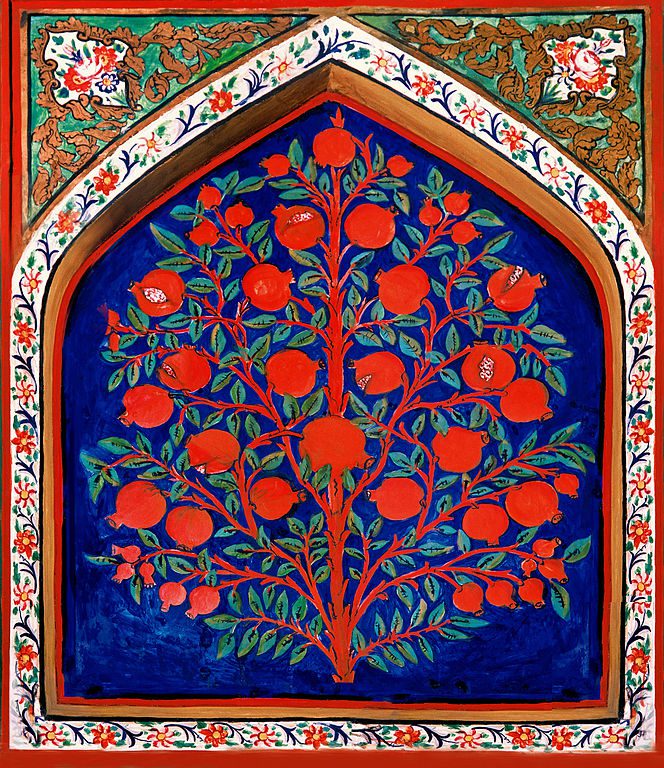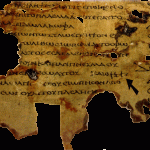
(Wikimedia Commons public domain)
Newly appearing in Interpreter: A Journal of Latter-day Saint Faith and Scholarship, an article by John A. Tvedtnes: “Tree of Life, Tree of Healing” Abstract: The late Hebrew scholar John Tvedtnes takes readers on a grand tour of Jewish and Christian stories and traditions that attest to the Tree of Life as not only a means to prolong life, but also to impart a healing power to individuals and to the earth itself. In a future day, it is said that the Saints will eat of its sweet fruit forever. [Editor’s Note: Part of our book chapter reprint series, this article is reprinted here as a service to the LDS community. Original pagination and page numbers have necessarily changed, otherwise the reprint has the same content as the original. See John Tvedtnes, “Tree of Life, Tree of Healing,” in “To Seek the Law of the Lord”: Essays in Honor of John W. Welch, ed. Paul Y. Hoskisson and Daniel C. Peterson (Orem, UT: The Interpreter Foundation, 2017), 495–520. Further information at https://interpreterfoundation.org/books/to-seek-the-law-of-the-lord-essays-in-honor-of-john-w-welch-2/.] *** I don’t know whether I’ve called attention to this item here before, but I just came across it (again, I think) while looking for something else, and I thought that it might be worth bringing to your notice today: “10 questions with John Gee” It appeared all the way back on 30 January 2018 — precisely three years ago this past Saturday — so a few things have changed since then. Most recently, John has taken notice of one of those things in a pair of articles for Interpreter: A Journal of Latter-day Saint Faith and Scholarship: “Prolegomena to a Study of the Egyptian Alphabet Documents in the Joseph Smith Papers” “Fantasy and Reality in the Translation of the Book of Abraham” Another notable change came for John personally in the first half of 2019: He was finally able to move from the Neal A. Maxwell Institute for Religious Scholarship (formerly the Foundation for Ancient Research and Mormon Studies, or FARMS) to the Department of Asian and Near Eastern Languages — my home department — in BYU’s College of Humanities. At the Maxwell Institute, he had long been the sole surviving remnant of the organization’s original founding vision. We’re delighted to have him in our department as the William (Bill) Gay Research Professor. *** And, once again, here are some “golden oldies” from a past volume of what was known then as Interpreter: A Journal of Mormon Scripture but is now titled Interpreter: A Journal of Latter-day Saint Faith and Scholarship: Daniel C. Peterson, “Introduction” Abstract: This introduction to Volume 5 considers the modern notion of a cessation of Bible-like divine manifestations and revelations, a belief which Joseph Smith encountered when he told others of the First Vision. This perception of an end to miracles and visions had become common by Joseph’s time, as evidenced by various writers, and continues to the present day. The Latter-day Saints, however, continue to believe in modern-day revelation, which we believe gives us a unique vantage point for the study of the Bible and other scripture, as illustrated in Interpreter: A Journal of Mormon Scripture. Benjamin L. McGuire, “Finding Parallels: Some Cautions and Criticisms, Part One” Benjamin L. McGuire, “Finding Parallels: Some Cautions and Criticisms, Part Two” Review of Rick Grunder. Mormon Parallels: A Bibliographic Source. Layfayette, New York: Rick Grunder—Books, 2008. 2,088 pp. On CD-ROM. $200.00. Abstract: Discovering parallels is inherently an act of comparison. Through comparison, parallels have been introduced frequently as proof (or evidence) of different issues within Mormon studies. Despite this frequency, very few investigations provide a theoretical or methodological framework by which the parallels themselves can be evaluated. This problem is not new to the field of Mormon studies but has in the past plagued literary studies more generally. In Part One, this review essay discusses present and past approaches dealing with the ways in which parallels have been used and valued in acts of literary comparison, uncovering the various difficulties associated with unsorted parallels as well as discussing the underlying motivations for these comparisons. In Part Two, a methodological framework is introduced and applied to examples from Grunder’s collection in Mormon Parallels. In using a consistent methodology to value these parallels, this essay suggests a way to address the historical concerns associated with using parallels to explain both texts and Mormonism as an historical religious movement. Brant A. Gardner, “When Hypotheses Collide: Responding to Lyon and Minson’s “When Pages Collide”” Abstract: At the end of 2012, Jack M. Lyon and Kent R. Minson published “When Pages Collide: Dissecting the Words of Mormon.” They suggest that there is textual evidence that supports the idea that Words of Mormon 12-18 is the translation of the end of the previous chapter of Mosiah. The rest of the chapter was lost with the 116 pages, but this text remained because it was physically on the next page, which Joseph had kept with him. In this paper, the textual information is examined to determine if it supports that hypothesis. The conclusion is that while the hypothesis is possible, the evidence is not conclusive. The question remains open and may ultimately depend upon one’s understanding of the translation process much more than the evidence from the manuscripts. Roger Nicholson, “The Spectacles, the Stone, the Hat, and the Book: A Twenty-first Century Believer’s View of the Book of Mormon Translation” Abstract: This essay seeks to examine the Book of Mormon translation method from the perspective of a regular, nonscholarly, believing member in the twenty-first century, by taking into account both what is learned in Church and what can be learned from historical records that are now easily available. What do we know? What should we know? How can a believing Latter-day Saint reconcile apparently conflicting accounts of the translation process? An examination of the historical sources is used to provide us with a fuller and more complete understanding of the complexity that exists in the early events of the Restoration. These accounts come from both believing and nonbelieving sources, and some skepticism ought to be employed in choosing to accept some of the interpretations offered by some of these sources as fact. However, an examination of these sources provides a larger picture, and the answers to these questions provide an enlightening look into Church history and the evolution of the translation story. This essay focuses primarily on the methods and instruments used in the translation process and how a faithful Latter-day Saint might view these as further evidence of truthfulness of the restored Gospel. Kevin Christensen, “Book Review: Temple Mysticism: An Introduction, by Margaret Barker” Review of Margaret Barker, Temple Mysticism: An Introduction (London: Society for Promoting Christian Knowledge, 2011), 181 pp. $18.94. Matthew L. Bowen, ““In the Mount of the Lord It Shall Be Seen” and “Provided”: Theophany and Sacrifice as the Etiological Foundation of the Temple in Israelite and Latter-day Saint Tradition” Abstract: For ancient Israelites, the temple was a place where sacrifice and theophany (i.e., seeing God or other heavenly beings) converged. The account of Abraham’s “arrested” sacrifice of Isaac (Genesis 22) and the account of the arrested slaughter of Jerusalem following David’s unauthorized census of Israel (2 Samuel 24; 1 Chronicles 21) served as etiological narratives—explanations of “cause” or “origin”—for the location of the Jerusalem temple and its sacrifices. Wordplay on the verb rāʾâ (to “see”) in these narratives creates an etiological link between the place-names “Jehovah-jireh,” “Moriah” and the threshing floor of Araunah/Ornan, pointing to the future location of the Jerusalem temple as the place of theophany and sacrifice par excellence. Isaac’s arrested sacrifice and the vicarious animal sacrifices of the temple anticipated Jesus’s later “un-arrested” sacrifice since, as Jesus himself stated, “Abraham rejoiced to see my day” (John 8:56). Sacrifice itself was a kind of theophany in which one’s own redemption could be “seen” and the scriptures of the Restoration confirm that Abraham and many others, even “a great many thousand years before” the coming of Christ, “saw” Jesus’s sacrifice and “rejoiced.” Additionally, theophany and sacrifice converge in the canonized revelations regarding the building of the latter-day temple. These temple revelations begin with a promise of theophany, and mandate sacrifice from the Latter-day Saints. In essence, the temple itself was, and is, Christ’s atonement having its intended effect on humanity.












